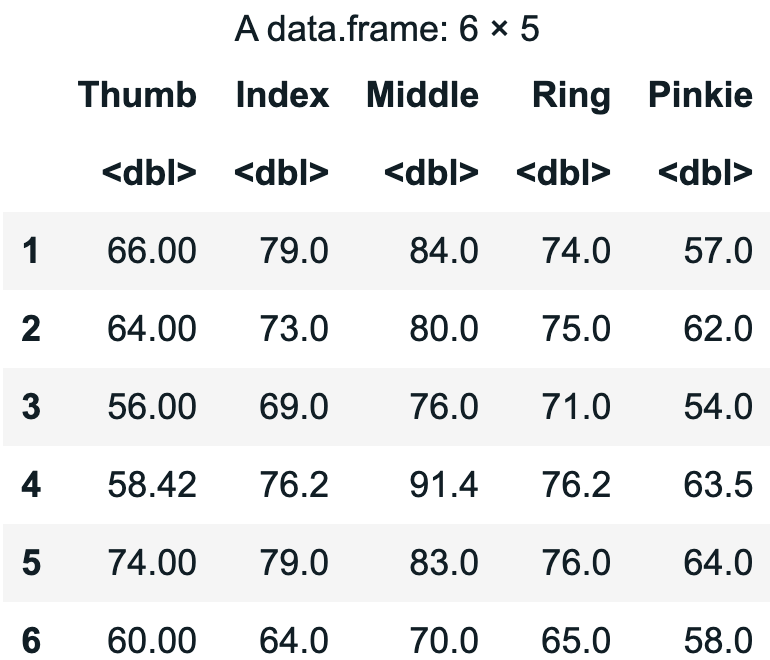select()
The select() function will select specific columns (variables) in a data frame. This may be useful when a data frame has many variables and you only want to take a look at a few of them together, or save a subset of variables as a new data frame.
NOTE: The select() function selects columns. To select specific rows, see the filter() function.
 Example 1:
Example 1:

Example 1:
# Select only the columns for Thumb, Gender, and RaceEthnic in Fingers
# Optional: Use head() to truncate the output
head(select(Fingers, Thumb, Gender, RaceEthnic))
Example output:
 Example 2:
Example 2:

Example 2:
# Save a selected set of variables as a new data frame called Fingers_subset
Fingers_subset <- select(Fingers, Thumb, Index, Middle, Ring, Pinkie)
head(Fingers_subset)
Example output:

Related Articles
Printing Pages of the Book
If you need to print pages of the book, you may find that printing them from Chrome results in oddly-formatted pages. You will get better-formatted pages if you print using either Safari or Firefox as your browser. If using Safari, go the the Safari ...recode()
The recode() function can be used to rename any of the values of a variable. Example: # recode the variable `Year` and save it is a new column in the data frame Fingers$Year_recode <- recode(Fingers$Year, "1" = "First", "2" = "Second", "3" = "Third", ...filter()
The filter() function will find rows/cases where the conditions indicated are true. It is often used with operators such as the following: > (greater than) < (less than) >= (greater than or equal to) <= (less than or equal to) == (equal to) != (not ...predict()
The predict() function will generate the prediction(s) from a model. Example 1: # Calculate the predictions from the Gender model of Thumb # Use the lm() function to specify the model predict(lm(Thumb ~ Gender, data = Fingers)) # Alt: Save the model ...ntile()
The ntile() function can be used to create equal sized groups (n-tiles) out of a quantitative variable. It can be modified to make any number of groups. For instance, if you take a quantitative variable such as Height from the Fingers data frame, you ...